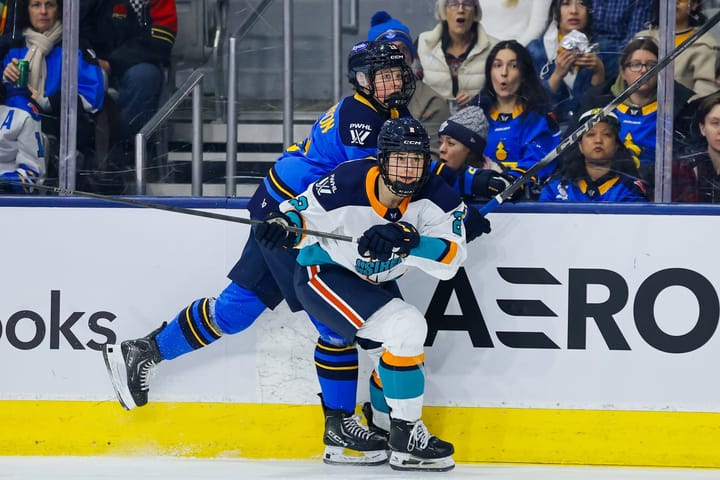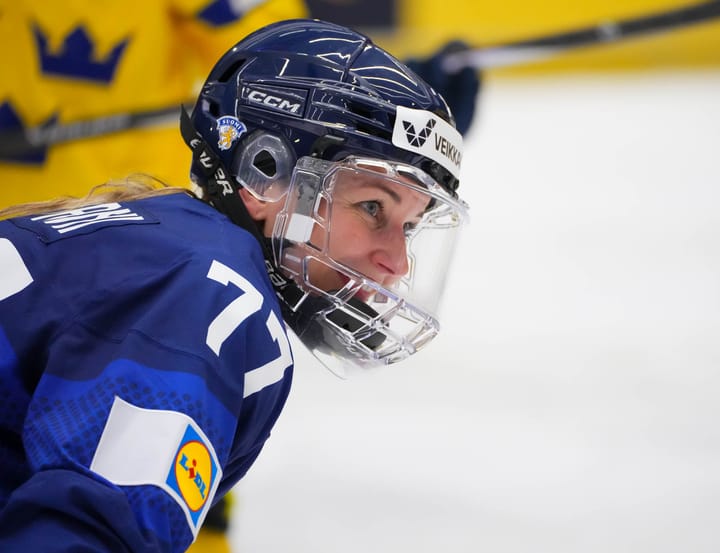Power Play Success Cannot Save Boston Blades
Boston’s dependence on its power play to provide offense is a worrying trend.
The Boston Blades’ recent woes are evident.
The sole American franchise in the Canadian Women’s Hockey League has plummeted from the pinnacle of the standings over the past few seasons. The team has been plagued with various deficiencies and difficulties on the ice, but the most obvious challenge the team has faced is the most fundamental one — Boston cannot score.
Perhaps more worrisome is the Blades’ particular inability to score at even strength. Thanks to the excellent work of Mike Murphy, we are able to analyze the strengths and weaknesses of CWHL teams with more nuance and clearer context in the 2017-18 season. Excluding Lauren Dahm’s herculean efforts in net, the only area that Boston rose to the level of their competition is in their power play success.
The Blades’ 17 percent power play was third best in the CWHL, yet they scored the fewest goals of any team in the league and accrued only one win all season. The team’s failure cannot be attributed to a lack of opportunity in their specialty. Boston was awarded 106 power plays in the 2017-18 regular season. Although only Kunlun Red Star had fewer power play chances than Boston, the league average of 109 power play opportunities per team highlights that the disparity is negligible if important at all.
As noted by Murphy in his CWHL statistics article, “When the power play didn’t deliver, the Blades had little chance of winning games — 43.9 percent of Boston’s goals came on the power play.” Boston’s 1.46 goals per game was worst among teams in the CWHL. If you remove power play goals from their total, the Blades averaged 0.82 even-strength goals per game over the course of 28 games in the 2017-18 season.
This unequivocal reliance on the power play to produce offense is not a recipe for success. Despite their relative success with the skater advantage, the Boston Blades were held to two or fewer goals in 24 of 28 games, including being shut out seven times. The team played as many games in which none of their goals were scored on the power play as games in which all of their goals came with the skater advantage — five games each.
The power play was an oasis in the desert for Boston’s top scorers. Unfortunately, the increased production was more a mere mirage than a respite from their famine. Leading scorer Kate Leary scored 10 of her 16 points on the power play. Following suit, Meghan Grieves tallied nine of her 14 points with the skater advantage and Melissa Bizzari cemented the trend with five power play points and a shorthanded goal comprising her 12 total points. In fact, no player scored more than six even strength points all season for Boston. For comparison, Montreal forward Sarah Lefort scored five even-strength points in a single game against Vanke on January 28.
If the Blades hope to climb out of the basement and return to the winning ways of their past they need to find ways to consistently score at even strength. Only 19 percent of Boston’s goals came on the power play in 2014-15, the team’s Clarkson Cup-winning season. Since then, their precipitous decline has been accompanied by 39 percent of goals in 2015-16 and 34 percent of goals in 2016-17 relying on the power play. This year’s total of 44 percent continued the trend of dependency on the power play for a team that has scored only 91 goals in its past 76 games.
The top two teams of the 2017-18 regular season fall in line with this pattern. Montreal led the CWHL with 116 power plays and finished with 22 percent of their 117 total goals scored with the extra skater. Conversely, Kunlun’s 93 power play chances ranked last in the league and 21 percent of their 96 goals were tallied on the power play. Clarkson Cup champion Markham only scored 18.5 percent of their 81 regular season goals on the power play. These teams were all successful at finding offense at even strength instead of needing their special teams to carry them.
The Boston Blades have proven that a potent power play is not the key to victory. It will not make a bad team a good team. Seasons are too long, power plays are too fleeting, and hockey is too fickle of a sport to allow such situations to persevere. Boston’s reliance on their power play is both a cause and a symptom of their offensive woes which must be alleviated if we are to see the Blades return to the top of the CWHL.





Comments ()